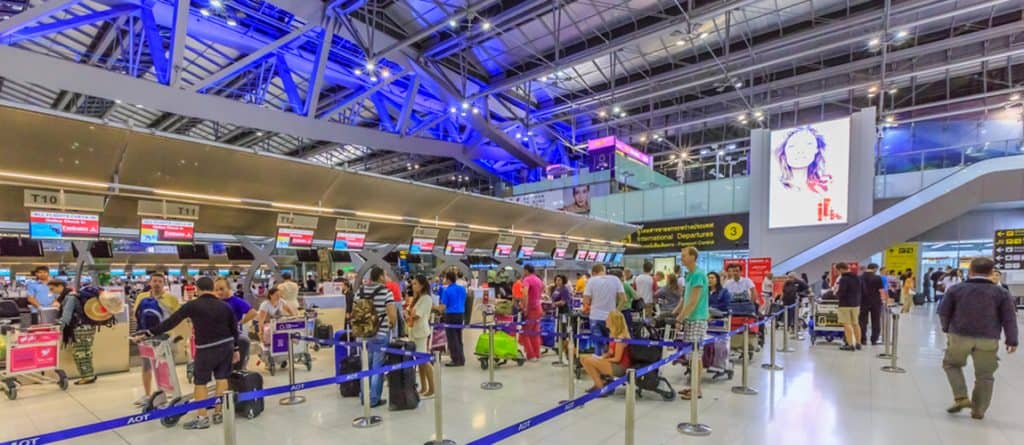
From kerbside to airspace, airports are scaling up for the predicted summer ‘travel boom’ starting with the Easter holidays. Despite this positive outlook, uncertainties over future COVID variants and the effects of the Ukrainian war overshadow. Smart airport capacity planning will enable a growing but flexible operation, matching capacity needs with fluctuating passenger demand whilst preventing resource inefficiencies.
How do airport capacity assessments assist an efficient scale-up?
Airport capacity planning assessments evaluate the efficiency of airport processes and plan for future growth. This is an important exercise to carry out to ensure your operation grows efficiently through the peak season to come.
The effects of the Covid pandemic such as the loss of experienced staff and reduction of resources have caused capacity constraints at airports which need to be rebalanced in line with future demand. Read more about the factors causing capacity constraints here. Adrian Todd, AiQ CEO highlights –
‘More capacity in line with increasing demand will be the top operational challenge in 2022. We need to ensure the return of resources and key people to achieve the right balance and meet peak demand for the summer months ahead’
Leisure passengers will make up the majority of passengers during peak demand. This high passenger volume of concentrated demand will create capacity pressures, particularly on check-in, security, and baggage, if not carefully planned and prepared for. The substantial cost pressures airports face means the balance between over and undersupplying of capacity is crucial to get right.
What’s involved in Airport Capacity Planning Assessments?
Forecasting your demand with Live Data
Demand forecasting analyses the current and future demand based on flight schedules and operational details of the airport. By analysing the demand, clients can assess the capacity requirements of each process during the peak and off-peak times across the airport to prevent bottlenecks and queues.
Traditionally historic data has been used but is not helpful during these times. Collecting current flight schedules, passengers and baggage data from the airport allows us to analyse the impact on each process in the airport. Our years of experience working with a variety of worldwide airports tells us this data isn’t always readily available from the airport. Liaising with airlines and other stakeholders we obtain the required information for accurate analysis. Our team also carry out live surveys on how the airport is performing with the current demand and analyses the capacity for future demand.
Optimising your 18 key processes with expert insights
Analysing and gathering operational insights across all airport processes from kerbside to airspace creates an effective way to manage daily resource requirements and optimise the total airport operational efficiency. Using surveys and observations of every individual airport process, we provide recommendations to achieve quick wins, improve process times, realise cost savings, and resolve pinch points.
In addition to real quantitative data, observing live operations in action provides fascinating passenger behaviour qualitative information. This helps to predict queue lengths and waiting times by highlighting potential pinch points and the need to adapt operations accordingly. For example, our team are currently surveying and analysing Check-in desks capacity for a hub airport. Specifically, to monitor transaction times, queue lengths and passenger behaviours which will feed into the airport’s future resourcing decisions.
Understanding the bottlenecks and the impact of a process decision on the next step in the passenger journey ensures a holistic optimised operation, driving efficiencies across the entire airport.
AiQ can provide a demand and capacity assessment of an individual process or a full holistic assessment from kerbside to airspace.
Below are 18 key processes we optimise for our clients:
- Car Parking and Bussing
- Trollies
- Check-in
- Departure Baggage
- Passenger security
- Control Posts Security
- PRM Buggies
- Passenger required support
- Departure lounge
- Boarding Gates
- Transfer Systems
- Immigration
- Baggage Reclaim
- Aircraft Stands
- Aircraft turnaround
- GSE
- ULDs
- Runway
Clear vision with powerful modelling
Our operational airport planners use our in-house bespoke modelling tools to help clients visualise how the airport is currently used, where the capacity is, identify constraints that may stretch their LoS standards and what can be done to improve both capacity and efficiency.
During these times of unpredictable demand, we can run rapid multiple scenarios and compare outcomes.
Created specifically for recovering operations, our new tool called Airport Recovery Tool, ART can provide a holistic operational vision across 18 key processes to assist with daily, weekly, and seasonal decisions. A highly powerful but simple tool to use enables flexible and cost-efficient operations, providing departmental managers with the data to make smart operation decisions quickly.
Successful operational recovery
The months ahead are filled with excitement and apprehension as airports prepare and grow their operations for the predicted increase in passenger travel. One thing we have all learnt over the last few years is we live in an uncertain world. Clever analysis, scenario, demand, and capacity planning will prepare for every eventuality. Airport managers who have the insights and tools to make smart decisions quickly will ensure a responsive and efficient operation.
For over 20 years, AiQ Consulting has been analysing, modelling, and optimising the most complex airports worldwide. Our vast operational experience, analytical skills, and clever bespoke modelling tools provide a perfect combination to support airports through a successful recovery. We’re with you every step of the way.
Contact us for a rapid quote to assist your operational growth.

